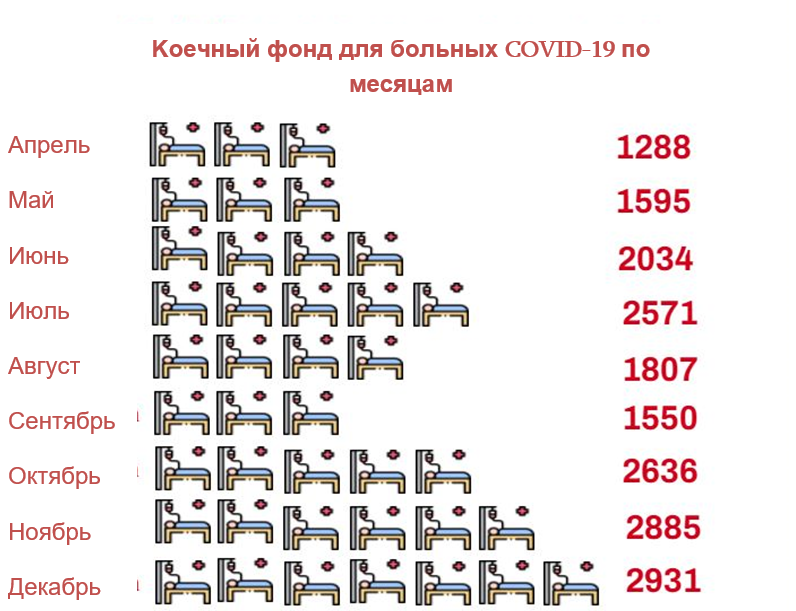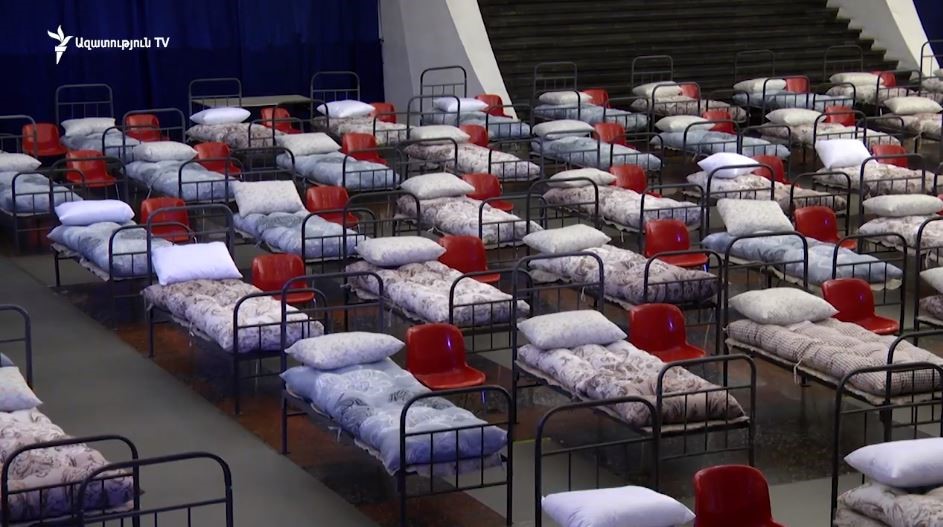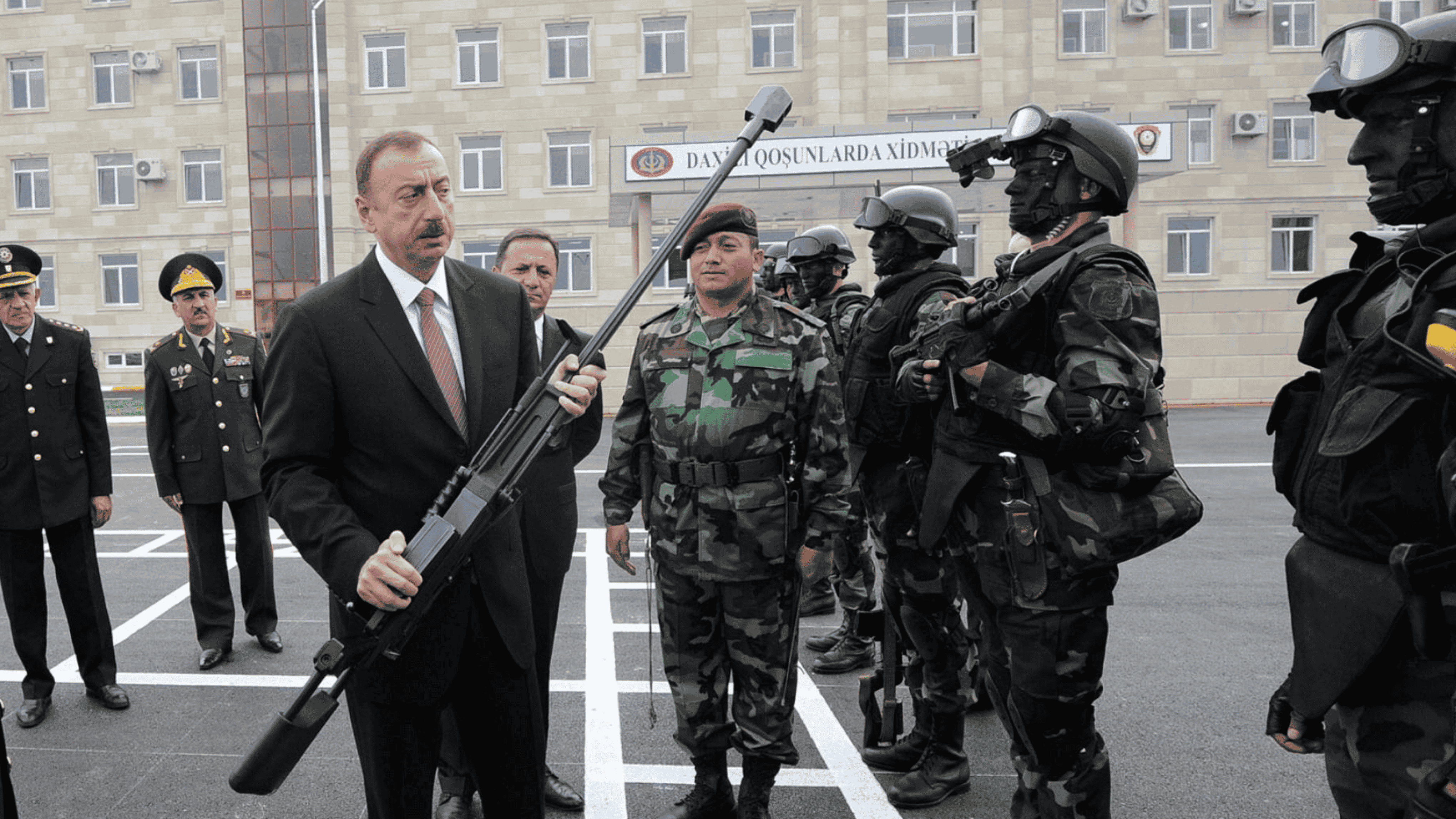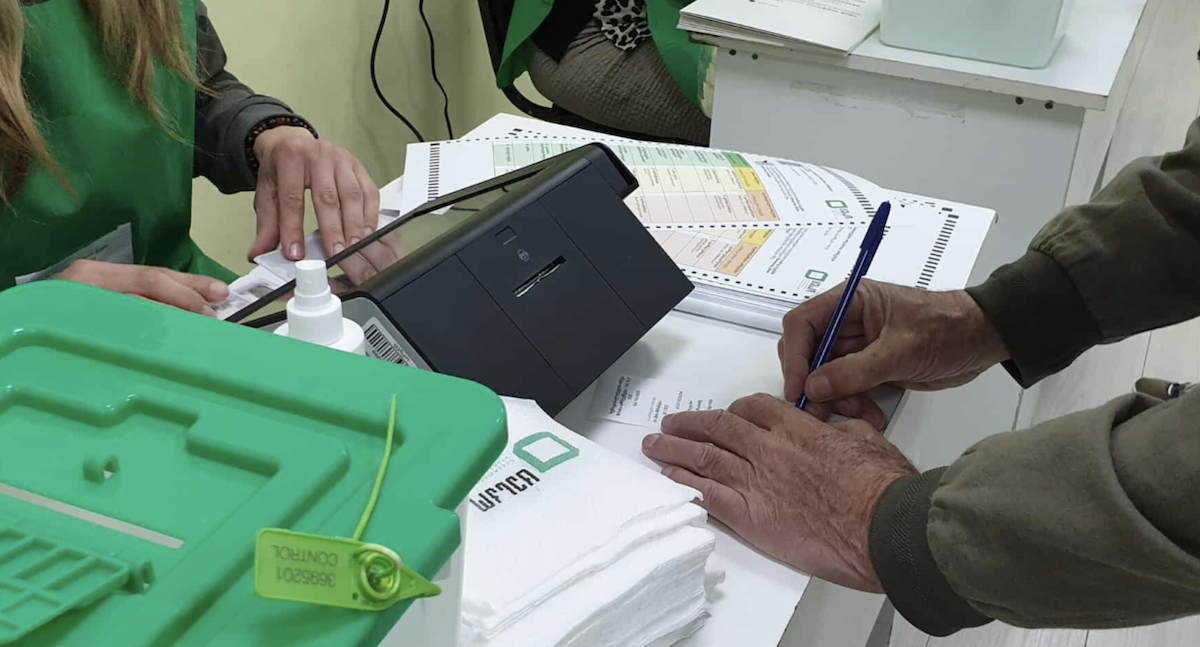Why was Armenia unprepared for the second wave of coronavirus?
The Armenian health care system has increased the number of hospital beds for patients infected with coronavirus to 2931 since March last year.
The country’s Ministry of Health reports that during this time, 29 additional medical institutions started to provide treatment of patients with Covid-19. Nevertheless, during the second wave of coronavirus, the number of people who required hospitalization exceeded the capacity of Armenia’s medical facilities, and the biggest issue that the healthcare system was faced with was the shortage of oxygen devices.
Some experts believe that the healthcare system was simply not prepared for the second wave of coronavirus, while the inability to address the shortage of oxygen devices was widely viewed as “shameful”.
Facts and figures
After the peak of the first wave passed, the pressure on the healthcare system of Armenia reemerged in the fall of last year. Several simultaneous developments have all contributed to the outbreak of the second wave of the pandemic in the country, including the reopening of the educational institutions, beginning of the “cold” season which is believed to facilitate the spread of the virus, as well as the outbreak of the second Karabakh war on September 27.
As of October 8, almost 20% of a total of 3,656 COVID-19 tests turned out to be positive. At that time, this number has hit a record-high within the four months period.
During the first wave of the pandemic, the highest number of patients that required hospitalization was observed on June 29, when, according to the Ministry of Health reports, medical facilities have admitted a total of 2161 people, while 21 patients had to be at home until a space at the hospital would free up.
Armen Ohanyan, an infectious disease specialist at the Astghik Medical Center, is confident that in the case of the first wave, it was possible to avoid the problem of hospital bed shortages.
“They should have never allowed ambulance teams to be late, the ambulance team to be late or for the hospitals to run out of free beds, a person died because of this. This can be viewed as an unsatisfactory assessment of [health system] preparedness”.
In one of his interviews at that time, Minister of Health Arsen Torosyan said that during the peak of the second wave of the pandemic, the number of people awaiting hospitalization at home reached 900.
According to the Ministry of Health, the number of hospital beds provided for inpatient treatment for those infected with COVID-19 was 2,636 in October, and 2,931 in December.

“The ministry, the government could increase [bed capacity] and do it on time, and it would have helped to fight the pandemic more successfully. During the second wave, the Ministry of Health did nothing to fight the virus, everything went on as usual. People resisted as best they could, largely thanks to the heroic efforts of the medical staff”, emphasizes infectious disease specialist Armen Ohanyan.
The expert of the parliamentary commission on health and social issues David Melik-Nubaryan recalls that back in March 2020, experts announced the need to immediately increase the bed capacity for patients with coronavirus, but this was done only when the situation got out of control.
COVID-19 medical facilities in Armenia
In March, during the early days of the COVID-19 pandemic in Armenia, patients with COVID-19 were treated in only one medical facility, at the National Center for Infectious Diseases, but later 19 more medical centers began to admit COVID-19 patients. As of December 2020, patients with coronavirus were treated in a total of 29 medical centers in Armenia.

Yerevan’s chief infectious disease specialist Armen Mkhitaryan believes that the lessons should have been learned during the first wave of the pandemic and appropriate preparations should have been made by engaging all medical facilities available in the fight against the coronavirus in the country. Mkhitaryan notes that the Ministry of Health prefers to allocate the money from the state budget to the medical centers under its direct control.
As an example, the infectious disease specialist cites St. Gregory the Illuminator:
“It was possible for this medical center to retrain into a hospital that accepts patients with Covid-19 since it is so multidisciplinary that in the event of war it quickly turns into a military hospital”.
Mkhitaryan is convinced that if all hospitals were engaged in the fight against the pandemic, including the First University Medical Center, which, according to him, has great potential in terms of the work of personnel in the intensive care unit, the number of patients awaiting hospitalization and mortality could have reduced significantly.
The exclusion of the university hospital from the list of medical facilities charged with treating patients with Covid-19 caused a wave of outrage in Armenian society. The health minister was accused of choosing not to utilize its facilities of personal ambition, but he denied this. When asked about the criteria that he used to decide which medical centers could accept patients with coronavirus, the Ministry of Health answered:
“Only the medical facilities where the conditions comply with sanitary and anti-epidemic standards, which are equipped with the necessary equipment, and with appropriately trained medical personnel can be used to treat patients with COVID-19”.

Deaths due to delayed medical care
On June 6, the Prime Minister of Armenia announced the death of a patient with coronavirus due to a delay in the provision of medical care.
“The reason for the delay is twofold. The relatives were a little late in providing the correct information about the patient to the healthcare system, the information came late, and the response of medics was, therefore, delayed, which is why we recorded the first of such death. There were two more fatal cases when the patients had to be put in the intensive care unit, but were lept in the general ward instead since there was no room in the intensive care unit”.
Shortage of oxygen devices
Chief infectious disease specialist in Yerevan says that it is not difficult to obtain oxygen from the atmosphere, and many hospitals have stations that produce oxygen. David Melik-Nubaryan believes that the example of Italy showed that pure oxygen is much more effective in the fight against coronavirus than oxygen machines and that it was necessary to start stocking up oxygen since March last year.
In November, Health Minister Arsen Torosyan stated that “the problem is not a lack of equipment, but a global shortage of oxygen”:
“It cannot be transported or imported. We are utilizing the oxygen sources of our country, we are making titanic efforts to avoid disruptions, we are trying to establish new heights. We expected [the pandemic] to grow, of course, but not by four or five times”.
“We’re dealing with inconsistency. I consider it shameful that we, as a sparsely populated republic, cannot solve primitive problems of an oxygen shortage”, emphasizes the chief infectious disease specialist in Yerevan Armen Mkhitaryan.
The ministry of health acquired 14 oxygen stations and during the second wave of the virus, 48 tons of oxygen were imported from Georgia.
As of December 8, oxygen deficiency was not observed, but the number of people infected with coronavirus in December decreased significantly compared to November of the same year.
Epidemiologist Armen Ohanyan believes that the healthcare system simply did not consider the fact that a large number of patients would all simultaneously require oxygen. Ohanyan added that oxygen stations could not be purchased in one day, but after the first peak of the epidemic, there was enough time to provide oxygen supplies to all medical centers which admit patients with coronavirus.
Meanwhile, during one of the government meetings, Prime Minister Nikol Pashinyan expressed confidence that Armenia is much better prepared for the second wave of the Covid-19 epidemic. The chief infectious disease specialist in Yerevan, however, emphasizes that talks about Armenia’s preparedness for the second wave of coronavirus were at least unjustified.
Extra costs
On March 31 last year, photos from the sports and concert complex appeared on social networks, showing the beds placed in the hallway. Discussions began, and it was said that patients would be brought there for treatment when hospitals run out of free beds in the clinics. Some even suggested that this was done on purpose, in order to keep society vigilant and have people follow healthcare regulations, especially one of compulsory mask-wearing.

The commandant’s office reported that 200 beds were installed in the sports and concert complex on March 25. They were also accompanied by the necessary medical equipment with an overall cost of more than 10 million drams (21,000 USD), purchased with funds from the state budget.
These hospital beds were dismantled on August 25, but in summer the commandant’s office announced that, if necessary, the temporary hospital could be deployed there again, although it never was.
David Melik-Nubaryan, an expert of the parliamentary commission on health and social issues, believes that this is a clear manifestation of disorganization in work, “the use of the complex was a senseless operation”.
When asked why a hospital was equipped in the hall of the CCM but was never used for its intended purpose, Minister of Health Arsen Torosyan said:
“The disease was in its early stages, we did not know much about it, so we took into account all possible scenarios. But then both our own experience and that of the rest of the world showed that it is non-functional, and treatment in such out-of-hospital conditions is ineffective”.
Experts draw attention to the fact that a new wave of pandemic is expected in the spring, and in addition to whether or not the healthcare system will be able to cope with it, it is very important to make sure that people themselves have a conscious attitude to the disease.
“People who accuse the state, the government should not forget that there is also a share of their fault in this. We must understand that no one will protect us from this virus, we must protect ourselves, by observing the rules of simple hygiene”, says the chief infectious disease specialist in Yerevan.
Before a possible third wave of the pandemic, the healthcare system must continue to increase the bed capacity in hospitals for patients with COVID-19 and solve the problem of oxygen shortages in order to be ready to withstand the new onslaught of the disease.
Measures are already being taken to replenish oxygen reserves. In particular, within the framework of 100 million drams (200,000 USD) allocated by the state, a special system for the production and supply of oxygen to other medical institutions in the region has been built on the territory of a medical center in the second-largest city of Armenia, Gyumri.
The Ministry of Health reports that in 2020, 12 oxygen production stations have already been installed in the country’s medical centers, 4 of which were transported to Armenia in mid-December, and 4 more large oxygen stations are expected to be transported from China.


















